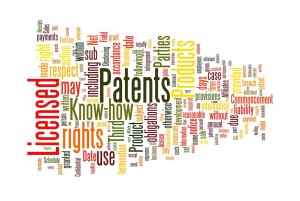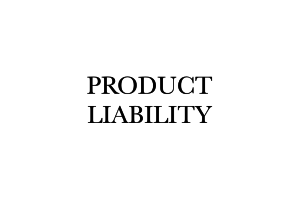For decades now, EU lawmakers have been developing an array of protective measures, aimed to protect consumers – i.e. “natural persons who are acting outside their trade, business, craft or profession” – in the complex contemporary legal environment. The rationale is that consumer cannot be ideally treated as other (much more equipped) market players, i.e. the business professionals such as manufacturers, retailers, services providers, and so on. In fact, these latter routinely negotiate, enter, and perform contractual obligations, at a rate the average consumer rarely does. And so, they have developed strategies and skills that put them in a position of distinctive predominance. In addition, and that’s the most stunning feature, there often is a patent disproportion in bargaining power, due to the fact that ‘professionals’ are organizations (often very large) and a consumer is a stand-alone player.
On the contrary, the traditional view that informed many of the XIX, and a consistent part of the XX century legislations was that both consumers and professional traders are independent agents, standing on equal foot and basically having the very same rights and obligation towards each other.
During the last 30 years, the EU has put many initiatives into place, aimed to assure a level playing field to consumers (see https://ec.europa.eu/info/live-work-travel-eu/consumer-rights-and-complaints_en at a glance). A more recent urgence consists in dealing with the challenges posed by the rising number of transactions relating to electronic devices supply (often made off-premises, and between parties operating in different jurisdictions). Among the latest normative acts that entered into force there are the two EU Council and Parliament directives of May 20, 1019, namely –
-
Directive 770 “on certain requirements concerning contracts for the supply of digital content, or services”
-
Directive 771 “on certain aspects concerning contracts for the sale of goods”.
The two are intertwined in the end, but their scope remains separate. In fact, while Dir. 770 focuses on supply of intangible assets (e.g. access to a database, or to an electronic game portal), Dir. 771 is about physical objects, that may or may not include digital elements[1]. So, a fairly ample category of things[2] in respect of which the EU has set a level of protection for consumers to be applied all over the Union[3].
Getting to the point of our interest, the starting idea (art. 10) is that a professional B2C seller is directly liable towards a consumer/customer for lack of conformity for 2 years after delivery, at least (contractually the parties may, in fact, agree for a longer period)[4]. The same liability is provided (art. 17.1) in respect of a producer which offers the consumer a commercial guarantee for the goods, even if he enters no contract for sale with the consumer.
Remedies (art. 13) consist in having the goods properly brought into conformity (via either repair or replacement, at the consumer’s choice) or the price proportionally reduced. As an alternative for material (i.e. “not minor”) non-conformity, consumer may still rely on the cancellation of the contract.
What about the seller’s supplier/s, i.e. who is upstream in the supply chain? Those suppliers typically enter a B2B contract between them, and eventually with the seller. Well, according to art. 18 (Right of Redress) they are exposed to a seller’s similar liability (“Where the seller is liable to the consumer because of a lack of conformity[5] … the seller shall be entitled to pursue remedies against the person or persons liable in the chain of transactions.”). It is an open issue whether his type of second-level liability may be prevented or not, by accord [6]. Arguing from considerandum 63, one could guess an agreement to the contrary between the seller and its supplier would be valid, unless a member State opposes to that by setting the rule as mandatory [7].
Finally, Dir. 771 does not take position in respect of “direct action”, i.e. the possibility for a consumer to raise a claim (not against the seller, but) directly against a person in previous links of the chain of transaction[8]. This is left to the Member States to possibly provide for it.
Those who are interested in receiving (free) full copy of the annotated decision, please write to newsletter@lexmill.com.
______________
[1] As an example of goods including digital content, think of a laptop computer, an iPhone, and any other electronic device nowadays of common use… all stuff that in the absence of its digital components can hardly perform the duty it has been bought for. Put it simple, in all this occurrences Dir. 770 is aimed to software; Dir. 771 to the hardware. Please note that sometimes a supply of intangibles made be made through a physical carrier, such as a DVD or a USB stick. This is regarded as ancillary to the main supply of intangibles; therefore it falls short of the definition of “good” under Dir. 771
[2] Exception is made as usual for “goods sold by way of execution or otherwise by authority of law” and member States are left free to include, or not second-hand goods sold at public auction and living animals.
[3] See arts 6 (Subjective requirements for conformity), 7 (Objective requirements for conformity), and 8 (Incorrect installation of the goods).
[4] Since a Member State may set a higher time limit, it is advisable to check the situation in respect of each Union country. Italy adhered to the 2-year term by setting a limitation period of 26 months (art. 133 of the Consumer Act – legisl. decree 206/2005 as sub. amended)
[5] Note that this includes “omitting to provide updates to goods with digital elements” if that is the case).
[6] In fact, Dir. 771 remains silent. Dir. 771, Considerandum no. 63: “… this Directive should not affect the principle of freedom of contract between the seller and other parties in the chain of transactions. The details for exercising that right, in particular against whom and how such remedies are to be pursued and whether the remedies are of a mandatory nature, should be provided by the Member States”.
[7] Italy has implemented art. 18 of Dir 771 by amending the Consumer Act (under art. 134 “a final seller who has complied with a remedy activated by a consumer may, within one year of the performance, bring an action in recourse [“Diritto di regresso”] against any liable person in order to recover what he has performed“) without any mention to the possibility of an agreement to the contrary. Previously, the redress right was the scope of art. 131 which, on the contrary, expressly mentioned the possibility for either the seller and its supplier to agreed otherwise, and the seller to unilaterally waive its right. Most likely this is simply attributable to a copy-and-paste operation. However, art. 143 of Consumer Act states that “The rights granted to a consumer by this Act shall not be negotiable. Any arrangement contrary to the provisions of this Act is null and void.” The first part of this provision is clearly limited to consumers only (and this is reinforced also by art. 135-sexies); the second part is more obscure, and in practice could open the door to a restrictive interpretation of the possibility of cap the seller’s right of redress under art. 134.
[8] The case of a manufacturer directly offering a warranty, left aside – as mentioned above.













